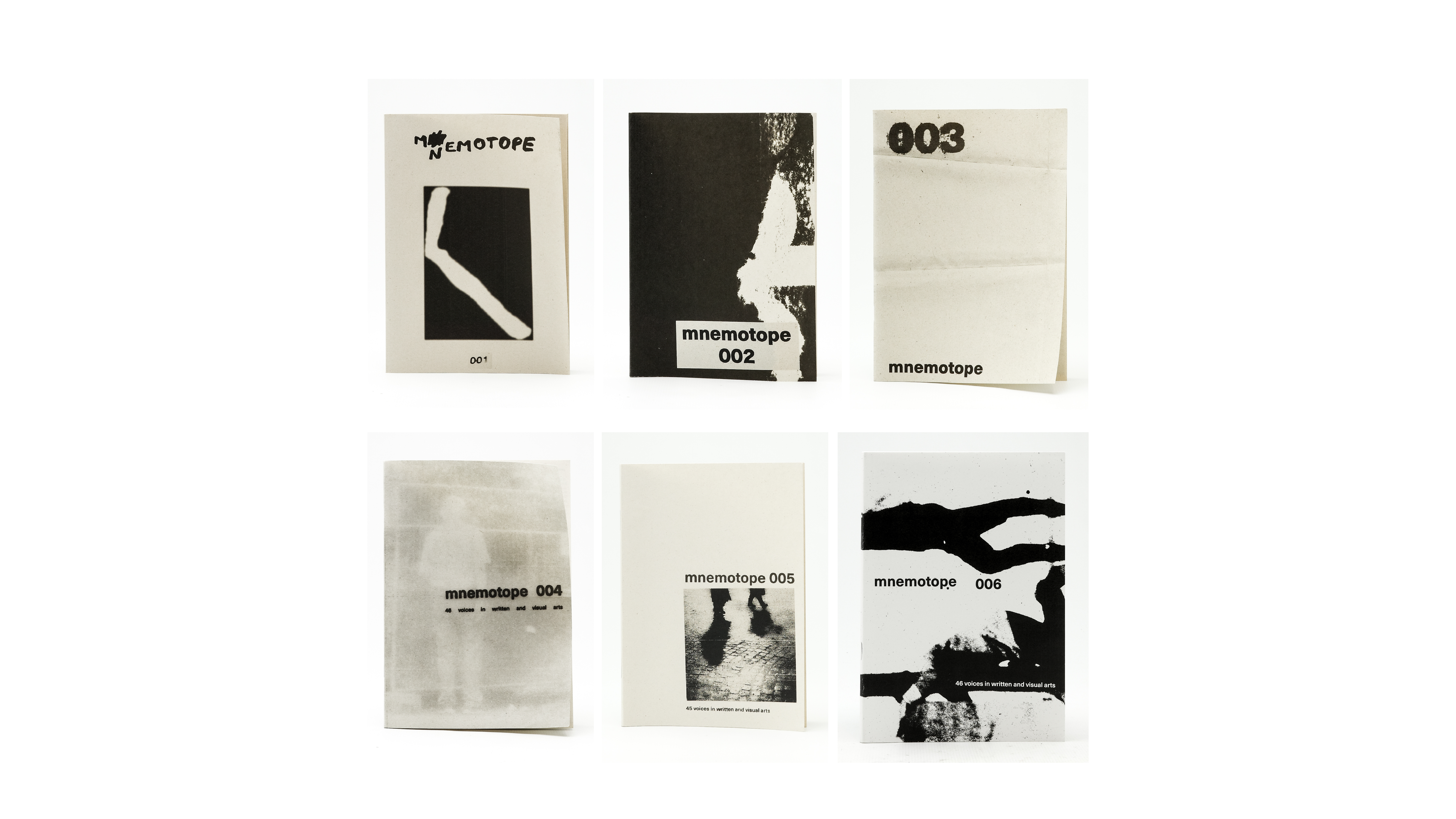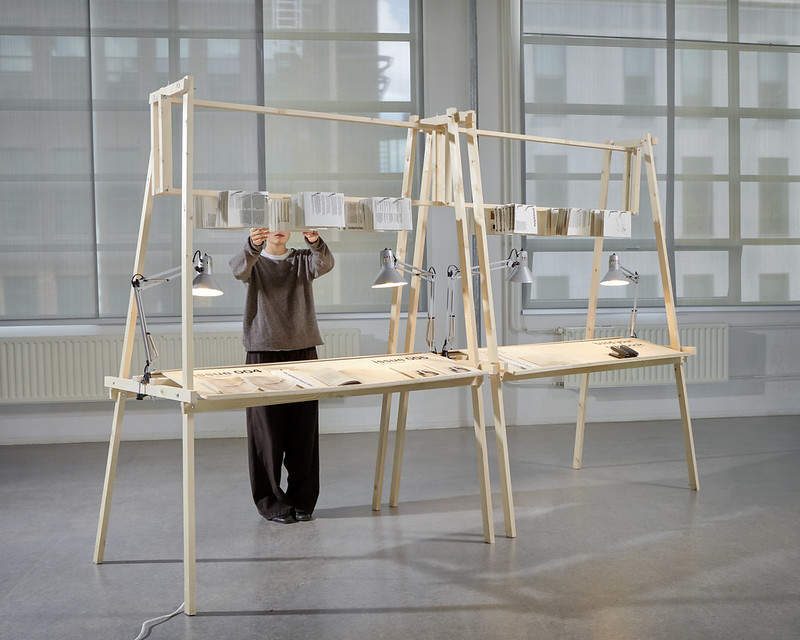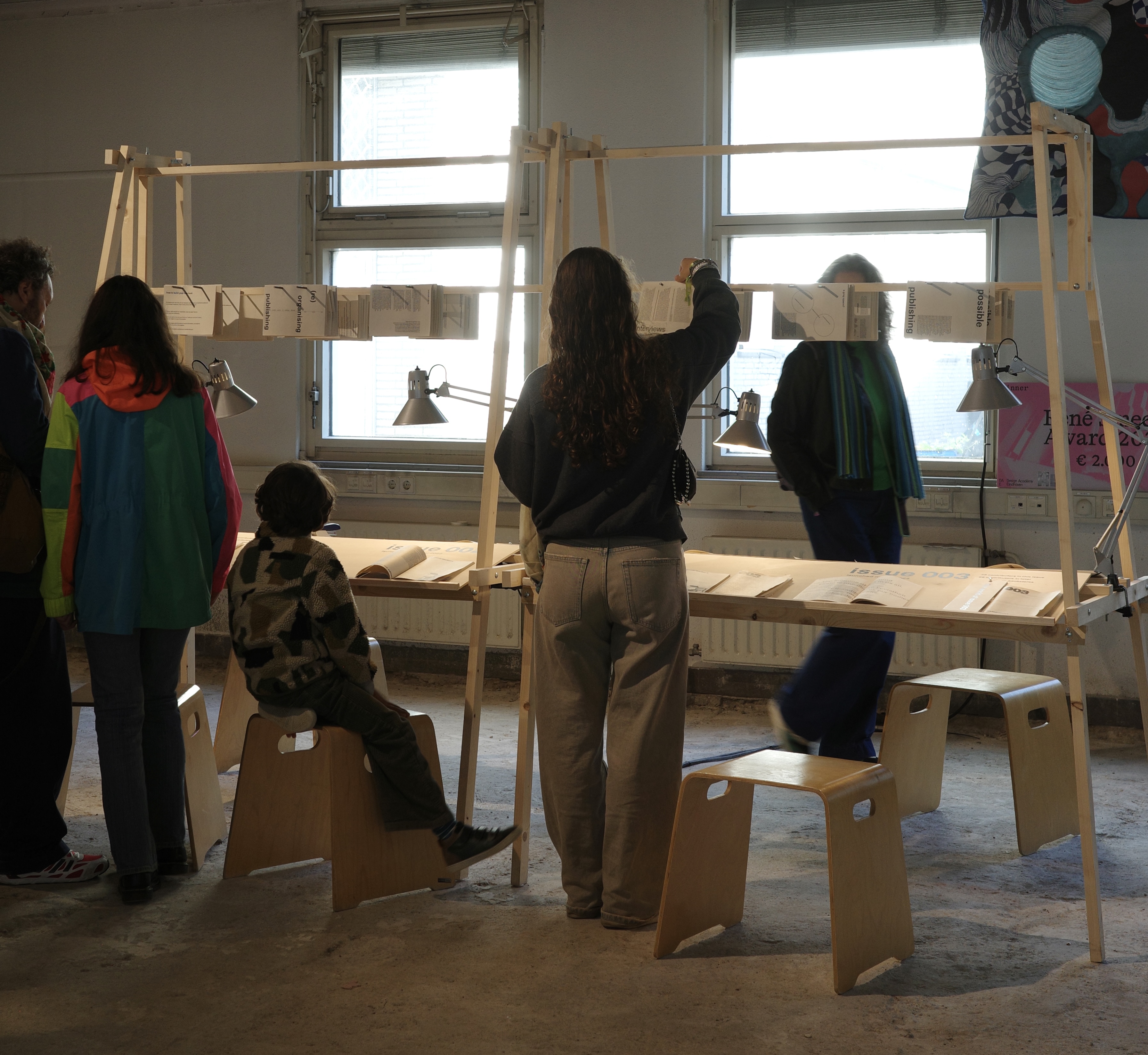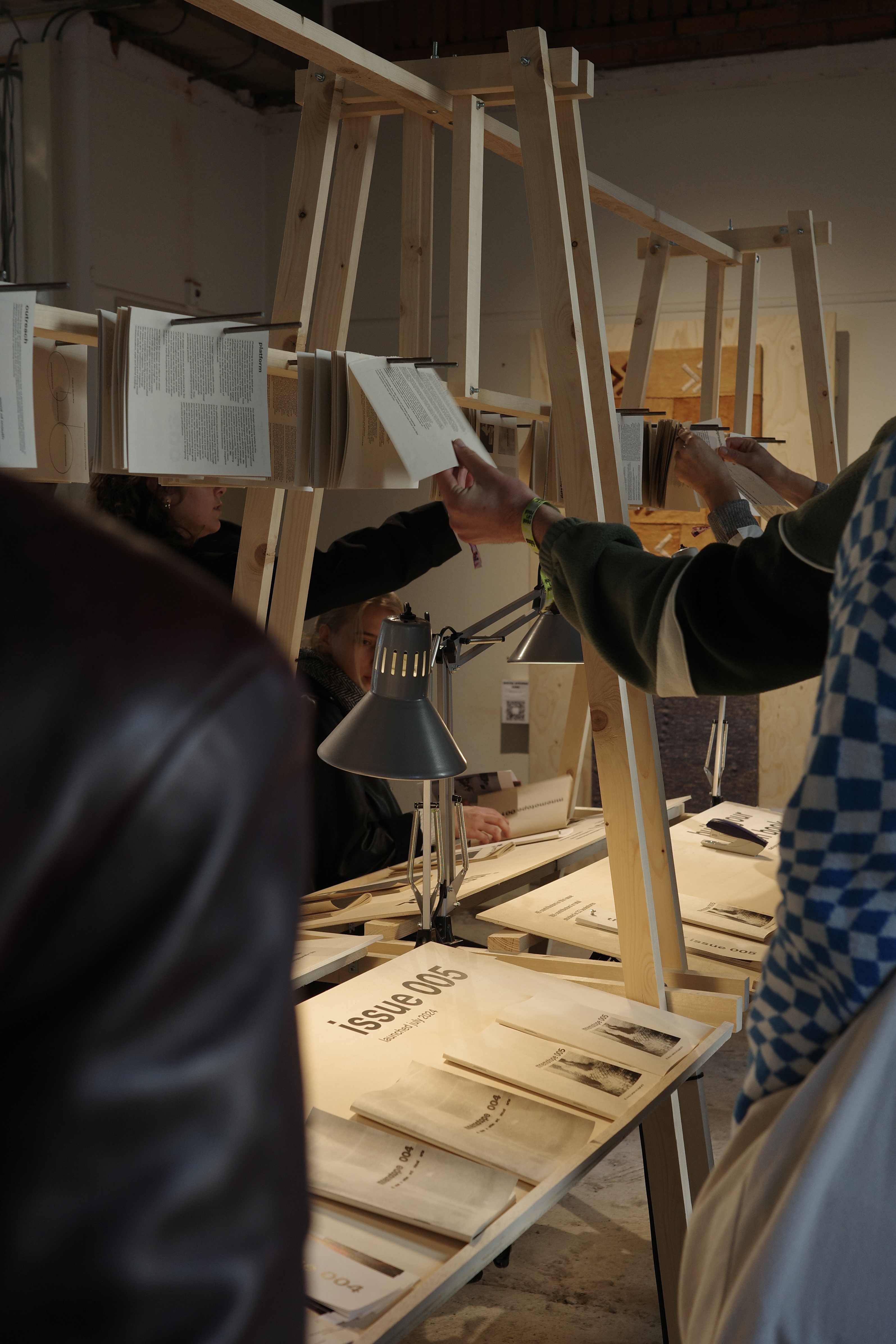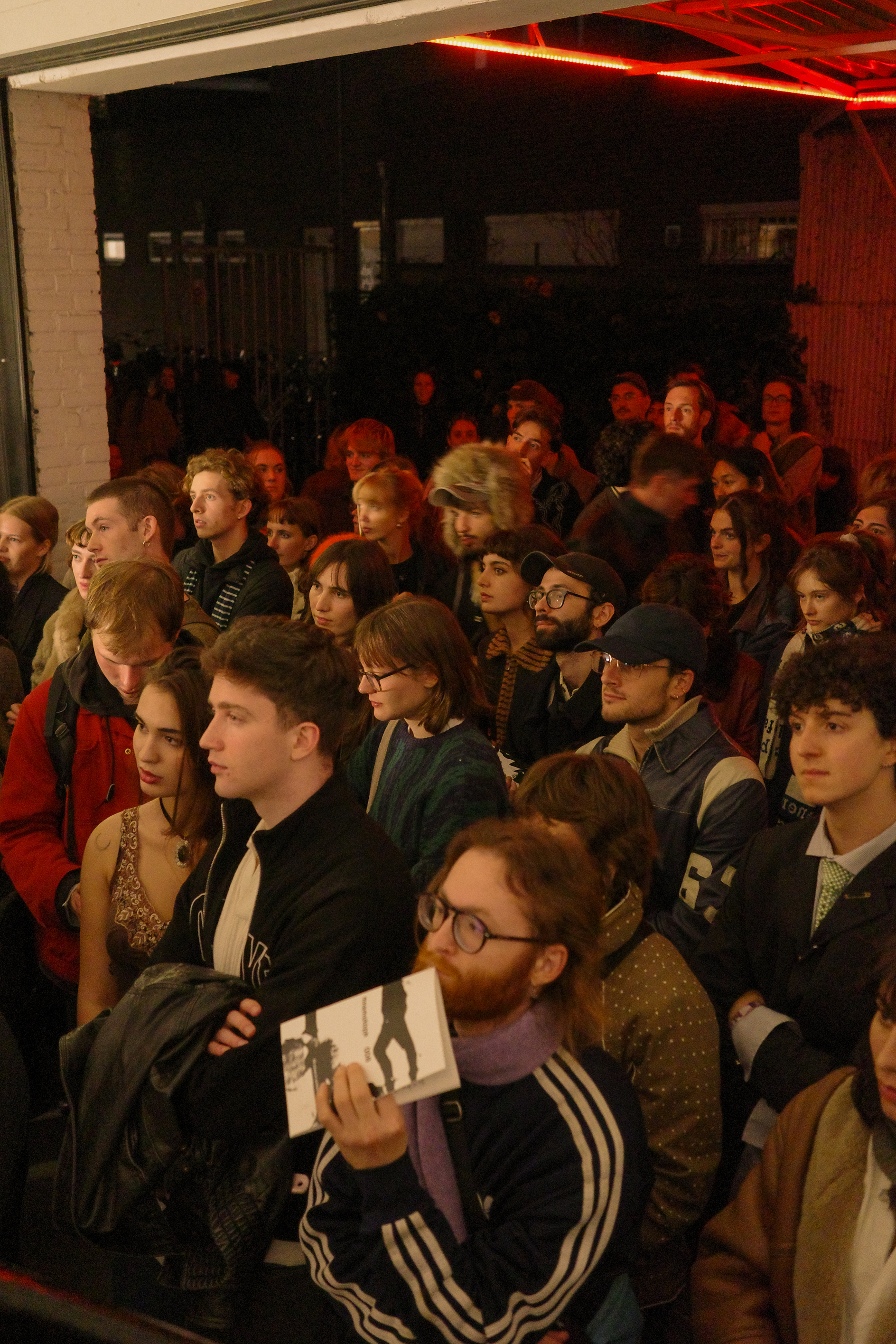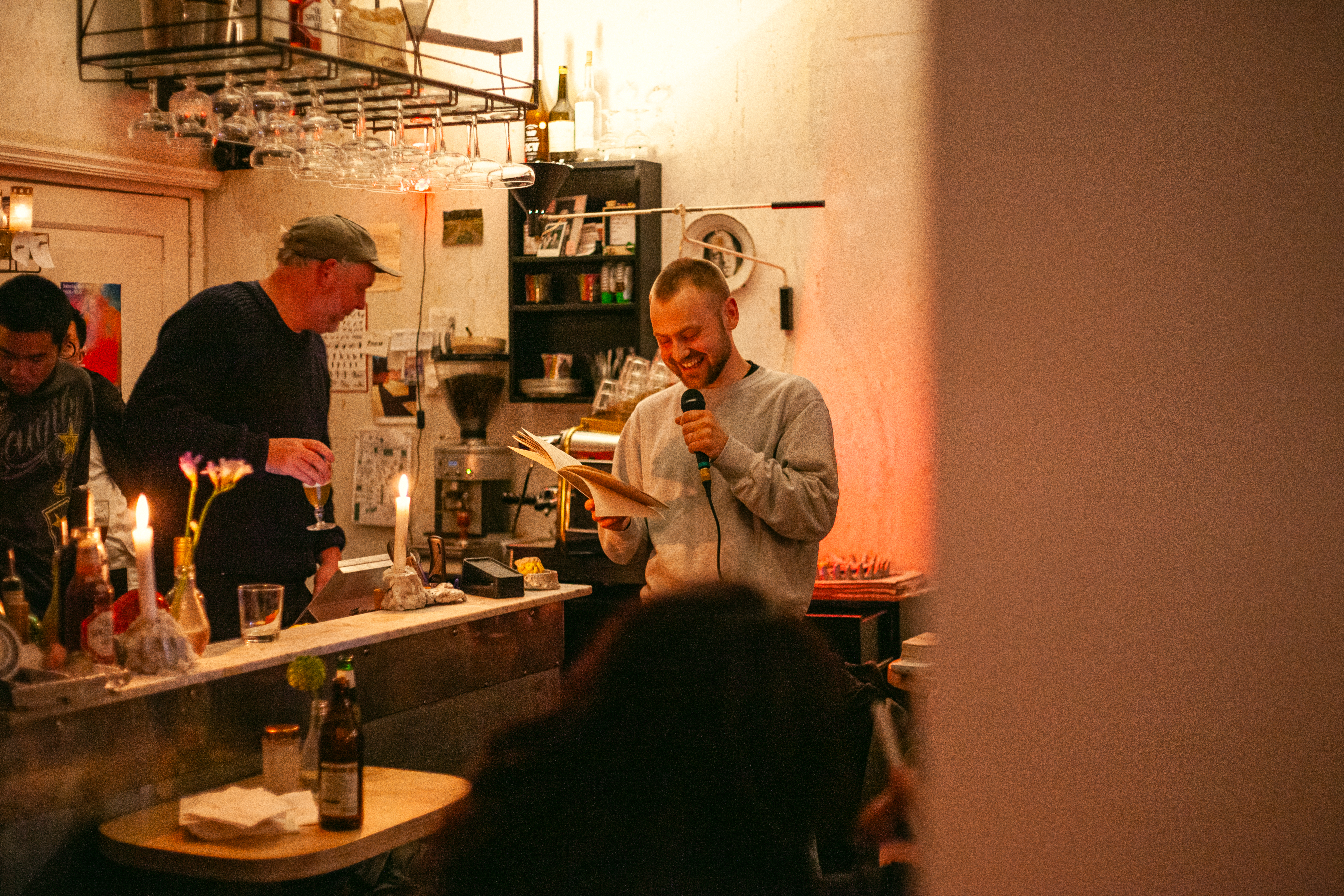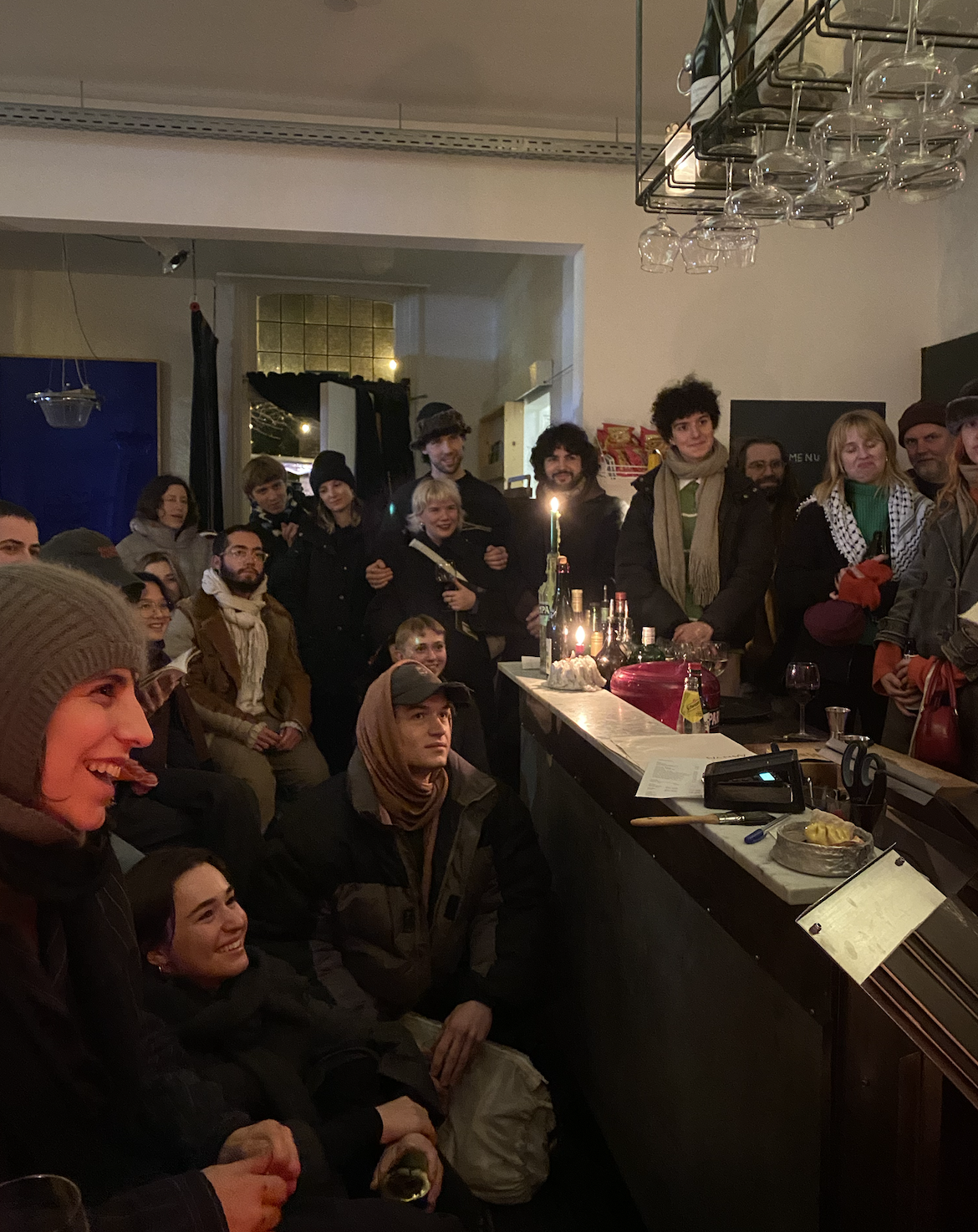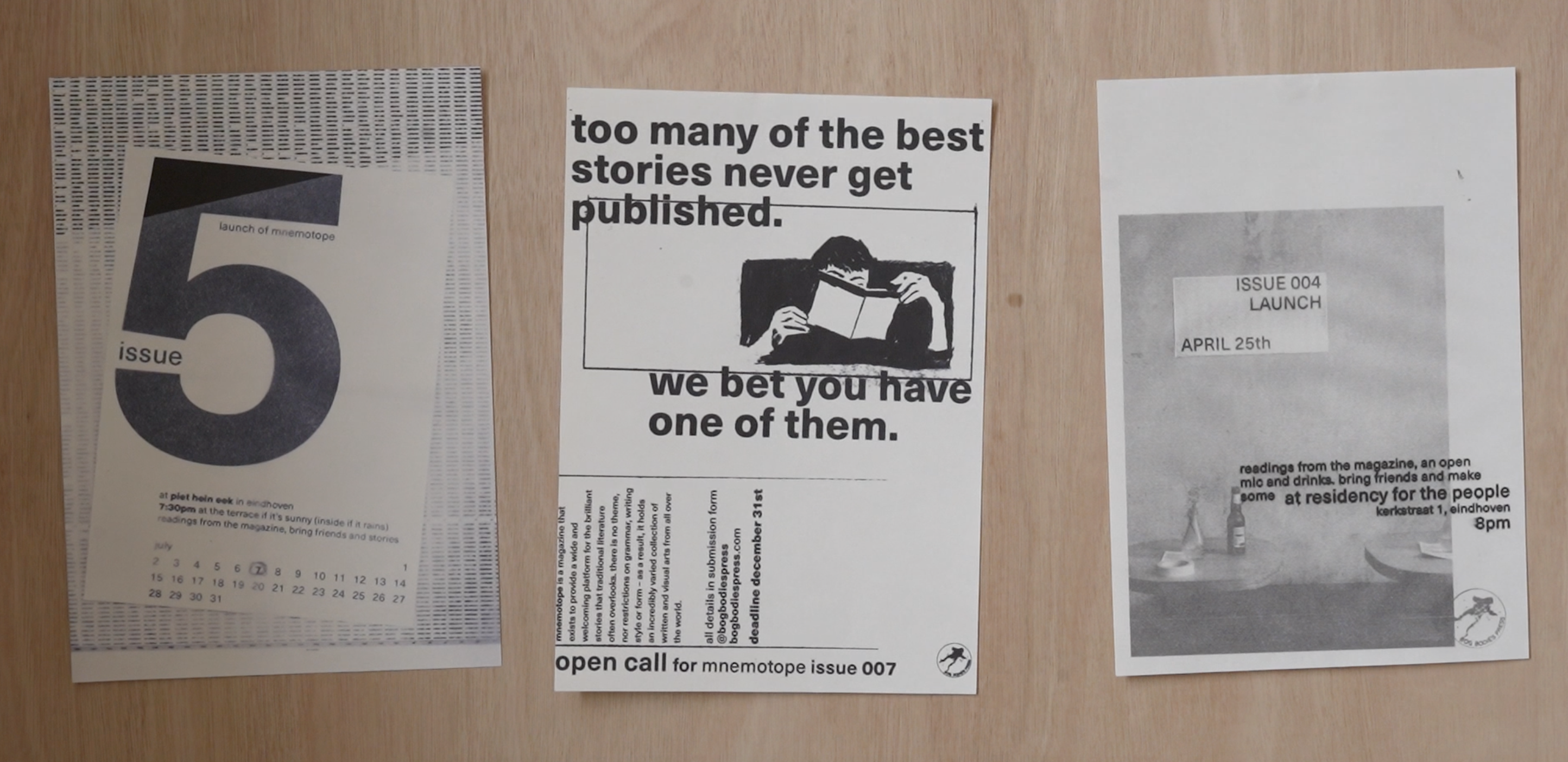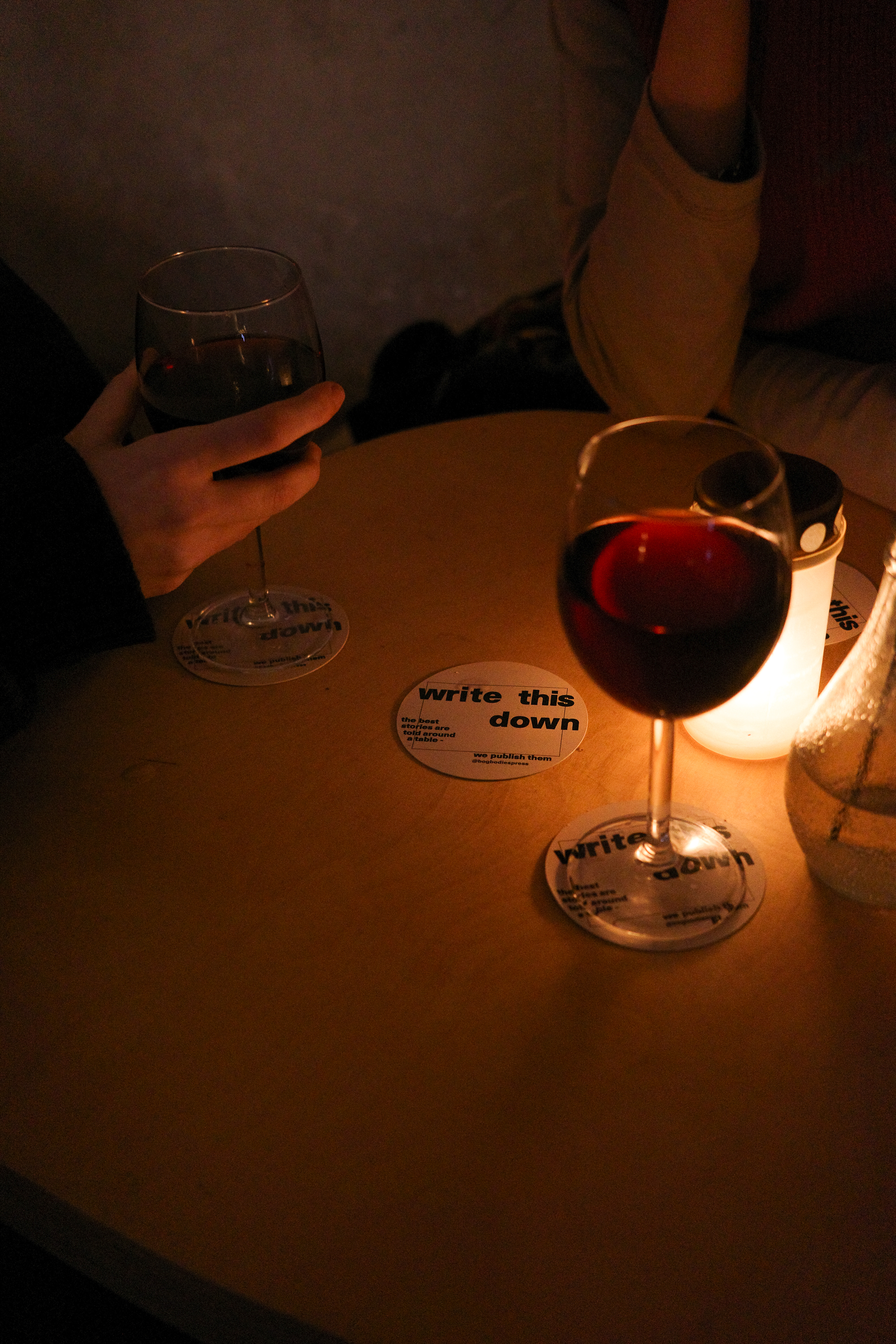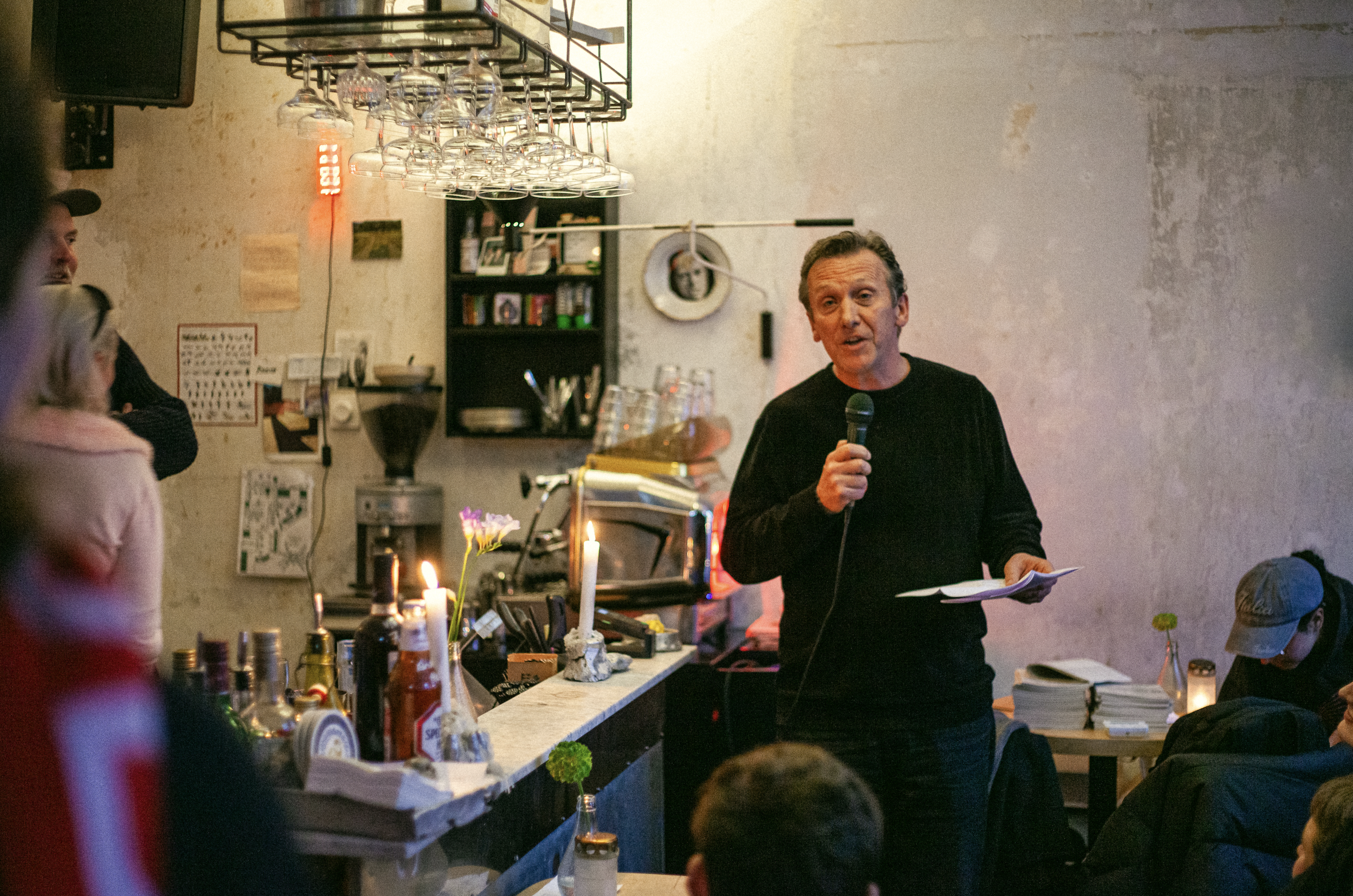Regaining a sense of belonging
mnemotope magazine
mnemotope magazine - Expanding Access In Publishing
mnemotope is a platform redefining literature by removing barriers of grammar, language, and form, and amplifying voices often excluded from traditional literature by prioritizing accessibility and bold design. In just over year, it has published 250+ voices from 22 countries, hosted 1,000+ attendees at live events, and is stocked in 35+ stores. when we include a broader range of voices and stories in publishing, we see the world, and each other, in more nuanced, vibrant, and wonderful ways.
Netherlands
Regional
Primarily Noord-Brabant and Vlaanderen
It addresses urban-rural linkages
It refers to other types of transformations (soft investment)
Prototype level
No
No
As an individual partnership with other persons/organisation(s)
Mnemotope aims to increase access in publishing and recenter storytelling as a tool for forging community by providing a wide and welcoming platform for the brilliant stories that traditional literature often overlooks. The traditional publishing industry separates readers from authors and dictates one proper, literary form through which stories can be told, and therefore heard. But storytelling is innate to all of us - when we look beyond the bounds of imperial grammar, traditional literary formats and the circles of established writers, there is a world of stories to discover; told by real people, in their own voices.
Our target group is people from all backgrounds with an interest in storytelling, who feel isolated or excluded by the current literary climate. According to a survey we conducted in December, the majority of our 250+ contributors had never been published before, and 89% of respondents stated that they had a transformed perspective on publishing after taking part in mnemotope - they stated that it felt more accessible, that it felt like a new possibility for them and that it made them feel like part of a larger community.
Our key objectives are to grow a tangible, sustainable, diverse community of storytellers and to create both regional and global platforms through which their stories are heard. Through bold publication design and events in partnership with local hospitality and cultural spaces, we foster a sense of empowerment and confidence in the voice of each person in our community. In the first year of mnemotope, our contributors have come from more than 70 towns and cities across 22 countries and four continents. Their work is now stocked in over 35 bookstores worldwide. We’ve also hosted over 1000 attendees at six live events in the Netherlands, Belgium and Ireland to date.
Our target group is people from all backgrounds with an interest in storytelling, who feel isolated or excluded by the current literary climate. According to a survey we conducted in December, the majority of our 250+ contributors had never been published before, and 89% of respondents stated that they had a transformed perspective on publishing after taking part in mnemotope - they stated that it felt more accessible, that it felt like a new possibility for them and that it made them feel like part of a larger community.
Our key objectives are to grow a tangible, sustainable, diverse community of storytellers and to create both regional and global platforms through which their stories are heard. Through bold publication design and events in partnership with local hospitality and cultural spaces, we foster a sense of empowerment and confidence in the voice of each person in our community. In the first year of mnemotope, our contributors have come from more than 70 towns and cities across 22 countries and four continents. Their work is now stocked in over 35 bookstores worldwide. We’ve also hosted over 1000 attendees at six live events in the Netherlands, Belgium and Ireland to date.
Inclusion
Community
Storytelling
Empowerment
Transformation
Sustainability is consistently at the forefront of our design process, and our ultimate goal is always to use the minimum possible product to achieve the maximum impact. While the printed magazine is often what brings people into the project, our emphasis on expanding it to both in-person and digital platforms is what fosters the sustainable growth of our community. This allows us to have far more meaningful impact beyond the scope of the printed page.
The design of the magazine itself is directly informed by our sustainability guidelines. We use exclusively recycled paper (PaperWise and BioTop) with the most economical format possible (A5) to ensure minimal waste and paper cutoff. We also print exclusively in black and white, as colour printing typically requires more energy through the usage of multiple ink cartridges. Our production is based in the Netherlands, which not only supports local infrastructures but minimises shipping emissions in our supply chain and distribution. For the most recent issue of the magazine, we switched the cover to a thicker BioTop paper to increase the durability of the publication and extend its life-cycle.
The design of the magazine itself is directly informed by our sustainability guidelines. We use exclusively recycled paper (PaperWise and BioTop) with the most economical format possible (A5) to ensure minimal waste and paper cutoff. We also print exclusively in black and white, as colour printing typically requires more energy through the usage of multiple ink cartridges. Our production is based in the Netherlands, which not only supports local infrastructures but minimises shipping emissions in our supply chain and distribution. For the most recent issue of the magazine, we switched the cover to a thicker BioTop paper to increase the durability of the publication and extend its life-cycle.
Design is a powerful tool through which we can reactivate people’s appreciation of non-literary storytelling, and create value in the stories of our community in the eyes of the existing literary ecosystem. As trained designers, we utilize our knowledge of aesthetics and graphic design to create unique and beautiful publications that appeal to our audience and encourage bookstores to stock the magazines. This approach also creates value for our contributors, by showcasing their stories in an editorial format that reflects the intrinsic quality of their work, reinforcing the fact that their stories deserve to be heard and celebrated in print.
We consciously design the layout of the magazine to be accessible and legible, whilst still visually interesting. We utilise analogue techniques such as scanning manipulation, transfers and drawn elements to create a warm and unique visual language.
During the editorial process we reinforce the collective aspect of the magazine by pairing pieces together that speak to each other, either thematically or in tone. We use layout to emphasize the connections between stories from different contributors, for example through non-linear formatting or creating visual bridges between them.
The design of our events is tailored to encourage attendees to rediscover community storytelling within existing public space. The majority of our events are hosted in local hospitality venues such as bars during their regular opening hours, integrating collective storytelling practices into the fabric of their role as local meeting places. The familiarity of these spaces helps us to immediately create a welcoming and easeful atmosphere, which is essential for people reading their work aloud for the first time. We work with the custodians of the space on multi-sensory considerations, such as custom playlists and mood lighting, and repurpose the bar as a live stage for the sharing of diverse stories within the local community.
We consciously design the layout of the magazine to be accessible and legible, whilst still visually interesting. We utilise analogue techniques such as scanning manipulation, transfers and drawn elements to create a warm and unique visual language.
During the editorial process we reinforce the collective aspect of the magazine by pairing pieces together that speak to each other, either thematically or in tone. We use layout to emphasize the connections between stories from different contributors, for example through non-linear formatting or creating visual bridges between them.
The design of our events is tailored to encourage attendees to rediscover community storytelling within existing public space. The majority of our events are hosted in local hospitality venues such as bars during their regular opening hours, integrating collective storytelling practices into the fabric of their role as local meeting places. The familiarity of these spaces helps us to immediately create a welcoming and easeful atmosphere, which is essential for people reading their work aloud for the first time. We work with the custodians of the space on multi-sensory considerations, such as custom playlists and mood lighting, and repurpose the bar as a live stage for the sharing of diverse stories within the local community.
The core mission of mnemotope is to publish stories that are not given space in other literary contexts. We tackle this in large part through our open call guidelines - we have no theme to lower the barrier to entry for first-time applicants, and we have no restrictions on language and grammar. We also accept voice memos which we transcribe to ensure accessibility for those who feel insecure in their writing or have learning disabilities. We approach outreach beyond social media in two main streams - public space and direct outreach. Our interventions in public space have included posters, stickers in cities like Eindhoven, Rotterdam, Amsterdam and Brussels, and coasters in a range of bars and cafés. Despite limited budget for these campaigns, 4% of our audience claims to have found us through this form of outreach. In our direct outreach, we send our open calls to representatives of different reading and writing groups in libraries worldwide, directly inviting them to take part in Mnemotope. We’re conscious of the language we use throughout this process, ensuring our tone is welcoming, warm and doesn’t use any design or literary jargon.
The submission process for the magazine is designed as simply as possible - we use a straightforward Google Form with minimal entry fields, and offer a detailed FAQ sheet to help people through the process.
Alongside our sustainability goals, we have designed the magazine to be low-cost. We have maintained low but sustainable profit margins, allowing us to keep the magazine at a retail cost of €10. Marc Robbemond of Athenaeum Nieuwscentrum, the biggest seller of independent magazines in the Netherlands, stated that Mnemotope was one of the lowest cost magazines in his store and he believed that to be a contributing factor to its popularity. This means that the publication is accessible to a diverse group of readers, which directly influences our future contributors - 14% of contributors found Mnemotope through retail locations.
The submission process for the magazine is designed as simply as possible - we use a straightforward Google Form with minimal entry fields, and offer a detailed FAQ sheet to help people through the process.
Alongside our sustainability goals, we have designed the magazine to be low-cost. We have maintained low but sustainable profit margins, allowing us to keep the magazine at a retail cost of €10. Marc Robbemond of Athenaeum Nieuwscentrum, the biggest seller of independent magazines in the Netherlands, stated that Mnemotope was one of the lowest cost magazines in his store and he believed that to be a contributing factor to its popularity. This means that the publication is accessible to a diverse group of readers, which directly influences our future contributors - 14% of contributors found Mnemotope through retail locations.
We maintain open channels of communication with our readers through social media, email and our in-person events. We also conduct bi-annual surveys to find out more about them and what they are looking for from our platforms. During our first event, we hosted a live panel discussion on the current climate of publishing. We had scheduled reading from contributors to the first issue of the magazine, and music intermissions. We received great feedback on this event, but heard from multiple attendees that they would like to be more involved in future. After this event, we changed our format to be more informal and include an open-mic, so that those who may have been too nervous to sign up or didn’t submit before the open call deadline could still share their stories amongst the community. This has been a huge improvement, and has contributed to much higher community involvement and attendance during our events.
We also maintain consistent communication via email with our contributors during the development of the magazine. When we are making larger editorial decisions relating to a specific piece, we always consult with the author to make sure that they like how their piece is being represented. After feedback from contributors who could not make it to the in-person launch events, we started a new platform on our Substack and Instagram that features voice recordings of them telling their stories aloud. As the oral tradition of storytelling amongst community is so central to our ethos, this platform extends that beyond physical restrictions. This, in turn, has allowed readers who can’t attend local events to experience the magic of live, audible storytelling.
We also maintain consistent communication via email with our contributors during the development of the magazine. When we are making larger editorial decisions relating to a specific piece, we always consult with the author to make sure that they like how their piece is being represented. After feedback from contributors who could not make it to the in-person launch events, we started a new platform on our Substack and Instagram that features voice recordings of them telling their stories aloud. As the oral tradition of storytelling amongst community is so central to our ethos, this platform extends that beyond physical restrictions. This, in turn, has allowed readers who can’t attend local events to experience the magic of live, audible storytelling.
On a regional, national and European level, we have maintained personal contact with stockists from various bookstores and frequently ask them for feedback. We have heard from them that they value our keeping the price at an accessible point, and after the third issue of the magazine we added a descriptive tagline to the cover upon their recommendation. We also asked them for feedback when we were considering changing the cover paper, and many said they could not sell copies that had been too frequently perused as they became damaged quickly. This contributed to our decision to switch to more durable paper for the cover.
On a local level, we have collaborated on each of our live events with local cultural and hospitality venues. We have co-organised all aspects of the event to ensure that the repurposing of the space was as seamless as possible, and included their pre-existing communities to the best of our combined ability. This has been apparent in different ways, such as differing start times, for example to accommodate a dinner sitting before the event began, or the integration of their existing networks, for example in one instance where we designed the setup around the sculpture of a local artist that they were showing. This flexibility ensures that we forge sustainable relationships with local enterprises and venues, as well as making each event unique and inclusive of their existing communities.
On a European level, we’ve attended events such as the ‘If Librarians Ran Europe’ summit hosted by The Europe Challenge in Amsterdam. We watched fascinating panel discussions and engaged in productive dialogue with other initiatives bridging literature and social engagement across Europe, from whom we learned a huge amount. This has led to the ongoing development of our collective and community publishing storytelling workshops, which will provide more in-depth support and guidance for emerging/non-literary storytellers.
On a local level, we have collaborated on each of our live events with local cultural and hospitality venues. We have co-organised all aspects of the event to ensure that the repurposing of the space was as seamless as possible, and included their pre-existing communities to the best of our combined ability. This has been apparent in different ways, such as differing start times, for example to accommodate a dinner sitting before the event began, or the integration of their existing networks, for example in one instance where we designed the setup around the sculpture of a local artist that they were showing. This flexibility ensures that we forge sustainable relationships with local enterprises and venues, as well as making each event unique and inclusive of their existing communities.
On a European level, we’ve attended events such as the ‘If Librarians Ran Europe’ summit hosted by The Europe Challenge in Amsterdam. We watched fascinating panel discussions and engaged in productive dialogue with other initiatives bridging literature and social engagement across Europe, from whom we learned a huge amount. This has led to the ongoing development of our collective and community publishing storytelling workshops, which will provide more in-depth support and guidance for emerging/non-literary storytellers.
In the bridging of the hospitality field and that of community event organisation, our collaboration with local hospitality venues had a meaningful impact. The success of the events showed them new potential for these spaces as hubs for community and culture, and proposed methodologies for events that could be hosted in ways that were not invasive to their regular business practice. It showed us the potential of existing local spaces in reaching and engaging audiences outside of the usual literary and art circles, bringing richness and diversity to our community.
We exhibited our project at Dutch Design Week 2024, and hosted a live event during that week. This was an opportunity for us to bring the design professionals who saw our project in the context of the fair and exhibition to see the real life community that it serves, which helped us to build credibility in the graphics and design world, while also supporting our objective of reactivating appreciation and valuation of non-literary storytelling. Giving the stories of our contributors a platform during one of the most esteemed design festivals in Europe was an incredible experience for all of us.
We studied the traditional literary institutions closely, putting tremendous efforts into distribution and ensuring that the voices of our contributors reach as widely as possible. Through this, we not only forged connections with European bookstores but also attracted two distributors. This enabled us to bring the voices of our 250+ storytellers to those stores, mostly for the first time, which added credibility to the project and gave our contributors confidence in their voices and published stories, as well as reinforcing their trust in the project.
We exhibited our project at Dutch Design Week 2024, and hosted a live event during that week. This was an opportunity for us to bring the design professionals who saw our project in the context of the fair and exhibition to see the real life community that it serves, which helped us to build credibility in the graphics and design world, while also supporting our objective of reactivating appreciation and valuation of non-literary storytelling. Giving the stories of our contributors a platform during one of the most esteemed design festivals in Europe was an incredible experience for all of us.
We studied the traditional literary institutions closely, putting tremendous efforts into distribution and ensuring that the voices of our contributors reach as widely as possible. Through this, we not only forged connections with European bookstores but also attracted two distributors. This enabled us to bring the voices of our 250+ storytellers to those stores, mostly for the first time, which added credibility to the project and gave our contributors confidence in their voices and published stories, as well as reinforcing their trust in the project.
It's vital to a healthy society that we have access to the subjective realities, experiences and perspectives of one another. In a world where publishing has never been so accessible with the development of social media, print-on-demand technologies etc., it has also never been so heavily dictated by algorithms and media/publishing conglomerates. The stories of those not deemed valuable by these entities are relegated to small circles of person-to-person circulation, and often remain within their niche. In an increasingly polarised world, these stories need greater reach, however small they might seem on their own. With Mnemotope, we connect directly with people who have stories to tell, regardless of whether they have experience with publishing/literature, and provide a platform that brings their stories to as wide an audience as possible both on and off the page.
Our focus on multi-disciplinary, participatory platforms for our storytellers is a key differentiator for Mnemotope. The magazine serves as a meeting point, from which we develop in-person events and digital media that we invite both readers and contributors to take part in. The project, therefore, becomes more than a sum of its parts - it grows into a layered and diverse expression of storytelling beyond literature, and a community that explores what that means for them and to each other.
We can clearly see the impact of Mnemotope - 89% of survey respondents reported a transformed view of publishing as being accessible, and a newfound feeling of belonging in print. Considering that 60% of those respondents already engage with small press or independent publishing on a frequent or moderate basis, it becomes even clearer that Mnemotope is singular in its field. Our submissions have grown exponentially - in the first 16 months we have seen them skyrocket by 572%. This shows us that the need for inclusive spaces in publishing is not being met, and that more initiatives like Mnemotope are deeply necessary.
Our focus on multi-disciplinary, participatory platforms for our storytellers is a key differentiator for Mnemotope. The magazine serves as a meeting point, from which we develop in-person events and digital media that we invite both readers and contributors to take part in. The project, therefore, becomes more than a sum of its parts - it grows into a layered and diverse expression of storytelling beyond literature, and a community that explores what that means for them and to each other.
We can clearly see the impact of Mnemotope - 89% of survey respondents reported a transformed view of publishing as being accessible, and a newfound feeling of belonging in print. Considering that 60% of those respondents already engage with small press or independent publishing on a frequent or moderate basis, it becomes even clearer that Mnemotope is singular in its field. Our submissions have grown exponentially - in the first 16 months we have seen them skyrocket by 572%. This shows us that the need for inclusive spaces in publishing is not being met, and that more initiatives like Mnemotope are deeply necessary.
The development of Mnemotope integrated two strands of parallel methodologies; the first strand was classical design research, focusing on the current climate of publishing. In the second strand, we used a more unconventional approach, launching our first open call very early on in the project in order to engage in true co-creation with our target group and to find organic participants on local, regional and global levels. This methodology ensured that Mnemotope could build upon existing knowledge within the publishing industry while meeting the true needs of its emerging community.
Our design research included interviews with different publishing professionals from grass-roots organisers within independent publishing to highly regarded figures within the art and design publishing field. These were vital windows into the existing practices and dogmas of the sector. We compiled these in a research document outlining the practices we wanted to adopt and those we wanted to subvert.
Simultaneously, we were engaged in the practicalities of working in this sector - our early launch allowed for immediate and personal feedback from those interested in participating, and forged important connections with our emerging community. We used a highly transparent approach from the beginning, fostering a sense of co-authorship with contributors and readers and inviting them to partake in the development of Mnemotope. This early launch also allowed us to test the theory that we were accumulating in our design research strand, through immersing ourselves in aspects of the industry like distribution, book fairs and production networks.
This innovative integration of two methodologies resulted in an immediate and responsive feedback loop which formed the project as it develops. The ability to receive information from the existing publishing industry, act upon it directly and receive feedback from our emerging community in real time was indispensable to the development of Mnemotope.
Our design research included interviews with different publishing professionals from grass-roots organisers within independent publishing to highly regarded figures within the art and design publishing field. These were vital windows into the existing practices and dogmas of the sector. We compiled these in a research document outlining the practices we wanted to adopt and those we wanted to subvert.
Simultaneously, we were engaged in the practicalities of working in this sector - our early launch allowed for immediate and personal feedback from those interested in participating, and forged important connections with our emerging community. We used a highly transparent approach from the beginning, fostering a sense of co-authorship with contributors and readers and inviting them to partake in the development of Mnemotope. This early launch also allowed us to test the theory that we were accumulating in our design research strand, through immersing ourselves in aspects of the industry like distribution, book fairs and production networks.
This innovative integration of two methodologies resulted in an immediate and responsive feedback loop which formed the project as it develops. The ability to receive information from the existing publishing industry, act upon it directly and receive feedback from our emerging community in real time was indispensable to the development of Mnemotope.
Our integrated, two-strand methodology could be impactful in a range of contexts - allowing for transparent, meaningful co-development not only with a focus group but with the full scope of the project's beneficiaries. Focus groups are often used in participatory design processes during the research and development stage, and offer important insights. However, they exist in a controlled environment and a theoretical framework - in our methodology, early integration into the intended context for the project creates the conditions for true, holistic input from beneficiaries not only during the research phase but throughout the development of the project. It gives the wider community a sense of co-authorship and co-creation in the project, fostering more sustained involvement.
The usage of collective publications in the formation of meaningful communities at local, regional and global levels can be effectively replicated. While the publication itself must be executed to a high standard, it is equally important to develop the trans-disciplinary aspects of the platform. Live events are crucial to create sustained and meaningful connections amongst participants and to make tangible the impacts and possibilities of community storytelling. Digital platforms are also important in ensuring the inclusion of participants who cannot attend local events. In order to foster trust in the project, it is vital to involve key industry and local stakeholders early in the project. Having the publication stocked in bookstores early on, for example, is an effective way of showing participants that it has solid foundations and real dedication to amplifying the voices of its community.
Storytelling is innate to all of us, and that other regions can use these methodologies to create sustainable, positive impact in their communities; it has been a powerful tool for connection through the ages, and is crucial to reinvigorate today to tackle isolation and disenfranchisement worldwide.
The usage of collective publications in the formation of meaningful communities at local, regional and global levels can be effectively replicated. While the publication itself must be executed to a high standard, it is equally important to develop the trans-disciplinary aspects of the platform. Live events are crucial to create sustained and meaningful connections amongst participants and to make tangible the impacts and possibilities of community storytelling. Digital platforms are also important in ensuring the inclusion of participants who cannot attend local events. In order to foster trust in the project, it is vital to involve key industry and local stakeholders early in the project. Having the publication stocked in bookstores early on, for example, is an effective way of showing participants that it has solid foundations and real dedication to amplifying the voices of its community.
Storytelling is innate to all of us, and that other regions can use these methodologies to create sustainable, positive impact in their communities; it has been a powerful tool for connection through the ages, and is crucial to reinvigorate today to tackle isolation and disenfranchisement worldwide.
Storytelling is one of our oldest communal practices, one that forges bonds and understanding and connects us to one another. The fragmentation of that practice through disparate channels of digital and print media has separated readers from authors and created a standardized, transactional landscape of storytelling. The traditional publishing industry is dominated by four major publishing conglomerates, and the stories that the majority of people have access to are dictated by them. In parallel, digital publishing is lauded as ground-breakingly accessible, yet our access to those stories is determined by algorithms belonging to media companies which are becoming increasingly partisan. We’re witnessing an increase in sentiments of disenfranchisement worldwide, as seen in dropping voter turnout for EU elections as well as those in the US.
In order to tackle this global crisis, we need to return to communal practices in which we feel heard and empowered in our voices, adjusted for the modern day - creating inclusive, trans-disciplinary platforms for storytelling and connection at local levels are vital ways to begin rebuilding the networks of social connection that are so crucial in the development of our confidence in our own voices.
We asked contributors to share how they feel after being published in Mnemotope during our survey in December. Some of the responses are as follows;
‘The world is very accessible all of a sudden.’ ‘It made me feel more confident.’ ‘It seems possible now. I felt insecure about sharing in the past.’ ‘It felt surreal to have my work being read by others during an event.’
These responses are a powerful example of the impact this project has had in its first year of development alone. By continuing to build strong, empowered communities of storytellers through platforms like Mnemotope we can create meaningful global impact, using this timeless tool for connection to address today's pressing issues of disenfranchisement and isolation.
In order to tackle this global crisis, we need to return to communal practices in which we feel heard and empowered in our voices, adjusted for the modern day - creating inclusive, trans-disciplinary platforms for storytelling and connection at local levels are vital ways to begin rebuilding the networks of social connection that are so crucial in the development of our confidence in our own voices.
We asked contributors to share how they feel after being published in Mnemotope during our survey in December. Some of the responses are as follows;
‘The world is very accessible all of a sudden.’ ‘It made me feel more confident.’ ‘It seems possible now. I felt insecure about sharing in the past.’ ‘It felt surreal to have my work being read by others during an event.’
These responses are a powerful example of the impact this project has had in its first year of development alone. By continuing to build strong, empowered communities of storytellers through platforms like Mnemotope we can create meaningful global impact, using this timeless tool for connection to address today's pressing issues of disenfranchisement and isolation.
We plan to continue using data to monitor the sustained growth of the project - in the first 16 months of mnemotope we’ve seen a 572% increase in submissions to our open calls, and aim to grow that figure to 1000% by the end of our second year through expanded marketing campaigns in partnership with local hospitality venues, similar to our coaster campaign.
Another key objective of ours is to bring collective storytelling to traditional literary spaces - we have already scheduled workshops on boundless storytelling and collectivity in publishing at the European Night of Literature 2025 in collaboration with the British Council, as well as at the Passa Porta Literature Festival this March. Over the course of this year, we aim to develop further connections in this field.
Through our surveys last quarter, we discovered that many respondents would like more ways to be involved if they can’t attend physical events. We are planning to develop our digital platforms over the next 18 months to include a podcast where people from the community share their stories and we host discussions on the power of communal storytelling.
We also found that, on a local level, people are looking to connect with others in the community and develop their own storytelling practice. We plan to diversify our in-person events, including storytelling supper clubs in collaboration with local venues, as well as informal writing circles.
We’re also looking to expand our distribution with a focus on open access spaces. Working with our distributors Antenne Books and Jesse Presse, we aim to be available in over 70 locations by the end of 2025, with 10% of those being libraries.
Within the next 5 years, our goal is to open a community storytelling space in Brussels, where we can activate our community through more workshops and public events and invite people interested in starting a similar project to view our archive and discuss how they could implement our methodologies within their contexts.
Another key objective of ours is to bring collective storytelling to traditional literary spaces - we have already scheduled workshops on boundless storytelling and collectivity in publishing at the European Night of Literature 2025 in collaboration with the British Council, as well as at the Passa Porta Literature Festival this March. Over the course of this year, we aim to develop further connections in this field.
Through our surveys last quarter, we discovered that many respondents would like more ways to be involved if they can’t attend physical events. We are planning to develop our digital platforms over the next 18 months to include a podcast where people from the community share their stories and we host discussions on the power of communal storytelling.
We also found that, on a local level, people are looking to connect with others in the community and develop their own storytelling practice. We plan to diversify our in-person events, including storytelling supper clubs in collaboration with local venues, as well as informal writing circles.
We’re also looking to expand our distribution with a focus on open access spaces. Working with our distributors Antenne Books and Jesse Presse, we aim to be available in over 70 locations by the end of 2025, with 10% of those being libraries.
Within the next 5 years, our goal is to open a community storytelling space in Brussels, where we can activate our community through more workshops and public events and invite people interested in starting a similar project to view our archive and discuss how they could implement our methodologies within their contexts.

